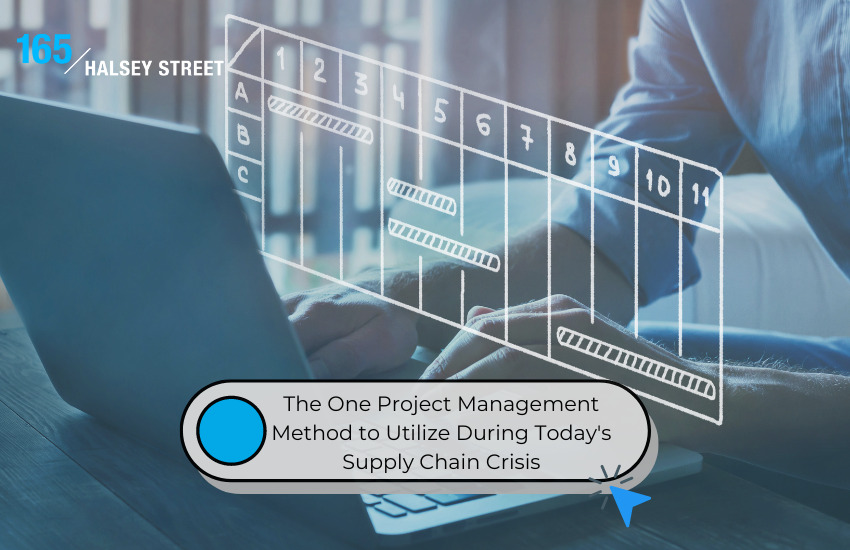How Putting Pen to Paper Will Aid in Navigating Unknown Supply Chain Waters
Managing complex supply chain disruptions continues to be a thorn in everyone’s side. Even two years later, we are still seeing delays, and the stress is bubbling up to the surface. What’s the digital infrastructure sector to do? Inspiration strikes from David Waldron of Kirby Engineering & Construction. His answer: focus on critical-path sequencing. Here at 165 Halsey Street, we looked at the Critical Path Method in more detail. We’ll share our findings here with the hope it inspires your team to stay prioritized and navigate these unknown waters with a bit more gusto.
If you’re thinking this is just another blog on staying organized, we have news for you: you’ll be just as blown away by this sequence as we are. The Critical Path Method, or CPM as PMs prefer to call it, is a “technique that allows you to identify tasks that are necessary for project completion. The critical path in project management is the longest sequence of activities that must be finished on time to complete the entire project. Any delays in critical tasks will delay the rest of the project.” Isn’t that key here in this supply chain crisis? Of course, there are issues of stockpiling, quote slashing, and overall volatility, but bottlenecking is real and causing further delays.
How Will CPM Help Me?
What’s the Critical Path here? We must manage equipment, anticipate delays, and be on top of pricing the best we can. What tasks are getting done, when are they supposed to get done, what products are causing a delay, and most importantly are there delays we can anticipate? Preparing for this is crucial and aids in preventing task congestion.
What Tasks Come Out of CPM?
Creating a strategic plan when reaching out to your suppliers, expanding your list, and staying top of mind are among the recommendations industry thought-leaders share. How do you get there? Unsure how to switch up your SOPs? Start here:
- First, list out your project name, each phase, and the task details that come along with it.
- Think about what tasks are dependent on one another. What task should you work on first? Are there any tasks you can complete simultaneously?
- Make a diagram or utilize your internal PM tool to sketch this out. Utilize graphics, lists, and anything that helps your company visualize this best.
- Approximately how long will it take to complete each task?
- It’s time to analyze which sequence of tasks will take the longest to complete. Now this, 165 Halsey friends, is called your critical path.
Additional Key Benefit:
Transparency directly correlates with less confusion and stress. Studies show when employees can see the bigger goal of what needs to be done and what it takes to get there, you eliminate uncertainty and set your team up for success. You’ll be amazed at what you’ll learn by implementing this exercise. As an added bonus, you can utilize this data for a future project and continue to streamline your operations.
True visibility and seeing the bigger picture is one small aspect you can work on to make an impact. At 165 Halsey Street, we commit to providing our clients with the absolute best services, optimizing both internal and external communication, and utilizing all tools to provide a best-of-class experience. For an updated list of our availability, view our offerings here.
